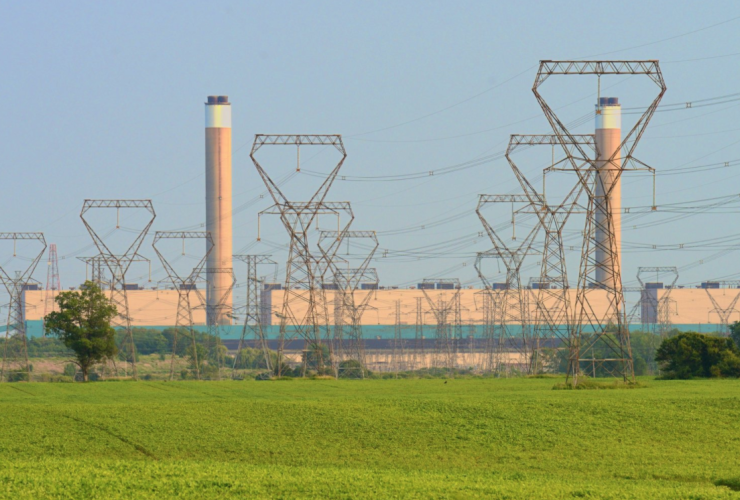Public health advocates must be gaining ground in Alberta if a Financial Post op-ed writer has to ignore his own research findings to deny the serious health impacts of coal-fired power plants and the billions of dollars in health benefits that would result from their closure.
In his February 24 opinion piece, Warren Kindzierski of the University of Alberta School of Public Health even questions the health evidence linked to fine particulate matter (PM2.5) – the air pollutant most clearly and consistently linked to chronic heart and lung diseases and acute impacts. He should know better.
Coal plants and air pollution
Kindzierski maintains that coal plants are not a major contributor of PM2.5. He refers readers to several of his own studies, one of which contains a graph that identifies coal combustion (the mustard yellow bar) as a small contributor of ultra-fine particles in Alberta’s air.
The dots are right there to be connected, but Kindzierski almost deliberately fails to make the point: Coal plants in Alberta are one the most significant sources of sulphur dioxide (SO2) - the airborne pollutant that is transformed in the air into the secondary sulphate (the large brown bar in the graph) that is the most significant source of ultra-fine particles and PM2.5.
In 2014, coal-fired power plants were responsible for 40 per cent of the SO2 emitted across Alberta, 60 per cent in the Edmonton region. So coal plants were the largest source of SO2 that is transformed into the secondary sulphates that contribute most significantly to air levels of ultra-fine particles and PM2.5 in Alberta.
Air pollution and human health
Kindzierski is on even shakier ground when he tries to challenge the overwhelming weight of evidence on the human health impacts of air pollutants in general and PM2.5 in particular. Thousands of studies have been directed at the health impacts associated with the five common air pollutants. In 2013, the World Health Organization reassessed the health literature on air pollution and reported:
- Stronger evidence than ever that short- and long-term exposure to PM2.5 increases the risk of death and disability, particularly due to heart disease
- Stronger evidence that short-term exposure to ground-level ozone affects lung and vascular health
- New evidence that short- and long-term exposure to nitrogen dioxide can increase the risk of death and disability, mainly by attacking the lungs
- Additional evidence that sulphur dioxide exposure can contribute to death and disability due to heart and respiratory disease, and accelerate asthma symptoms in children
These findings are well known and well accepted by public health, environmental, and medical professionals around the world. Kindzierski does business readers a disservice when he gives them false assurance that polluting technologies are immune to community and regulatory pushback to protect public health, now and in the future.
Harper-era research points to human health benefits
In 2012, using the Air Quality Benefits Assessment Tool developed by Health Canada, Environment Canada estimated that improved air quality resulting from the country’s current coal regulations would prevent about 994 premature deaths and 860 hospital admissions or emergency room visits between 2015 and 2035. The dollar value of those avoided health outcomes: $4.9 billion.
Last year, the Pembina Institute extrapolated the additional health benefits of accelerating the planned coal plant phase-out in Canada by a decade to 2030. Pembina determined that the accelerated phase-out would nearly double the health benefits associated with the existing coal regulations, preventing an additional 1,008 premature deaths and 871 hospital admissions or emergency room visits and saving nearly $5 billion over 20 years.
A Canada-wide phase-out of coal-fired power plants in 2030 is a public policy that would produce many direct public health benefits for Canadians, while helping the country meet its commitments under the Paris Climate Change Agreement. Public health professionals know it. Warren Kindzierski’s research helps prove it. For a business community that depends on sound data and advance notice of legitimate regulation, now’s the time to distinguish substance from spin.
Kim Perrotta has a master’s degree in Health Science and 34 years of experience working on environmental issues from a health perspective. She is the executive director at Canadian Association of Physicians for the Environment (CAPE). Dr. Joe Vipond is an emergency physician in Calgary and CAPE board member.







Comments